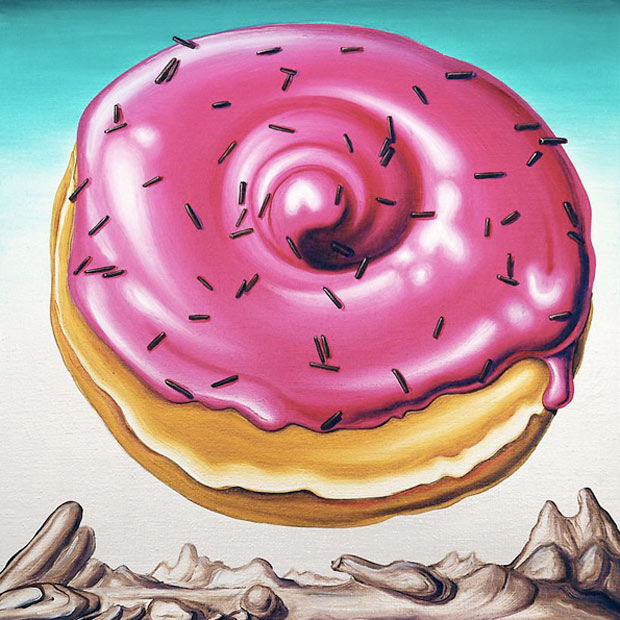Interview: Jiminie Ha and Item Idem
We get the scoop on the Miami launch of White Zinfandel Issue No. 3: Food Fights

by Laila Gohar
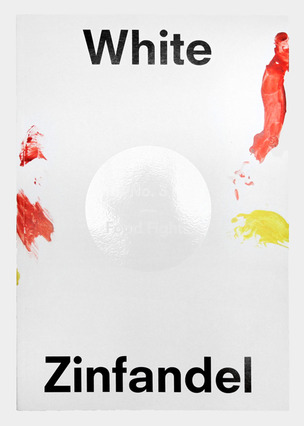
“White Zinfandel is not a magazine about food, it’s a magazine inspired by food” says Cyril Duval, a conceptual artist better known as Item Idem. The artist is collaborating with Chef Leif Hedendal for the release of White Zinfandel Issue No. 3: “Food Fights”, which launched at NADA Art Fair in Miami yesterday.
We sat down with Item Idem, and the magazine’s founder, creative director and curator, Jiminie Ha, to discuss the cross-pollination of food and design, and what it means to be an art magazine that experiments with food on an abstract platform.
What inspired you to start White Zinfandel?
Ha: I was traveling in North Africa about four years ago, and when I got back from my travels I thought it would be interesting acquire a space and have artists collaborate in a variety of disciplines within this physical space. From that idea, W/ — Projects was born. The space is really experimental because it’s less than 100 square feet. The opportunities are limited and the philosophy behind the project is curating within a limited space, time and budget.
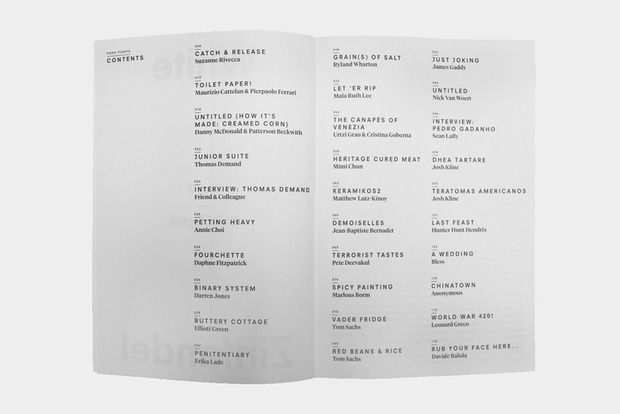
That was four years ago, and from there, I started conceptualizing a publication where I could curate another kind of experiment on a different platform. I view design as a type of curating, and wanted to create a publication as a platform for exploring different kinds of expression. I’m also a huge food lover, and wanted employ food as a common denominator. Since food is a fundamental necessity, people will always react to it. I thought it would be interesting to use such an essential part of human nature and assign it to people from disparate creative fields and see what they come up with on an abstract platform. I’m not interested in a specific recipe, or restaurant, but more how food conjures a visceral response in an individual.
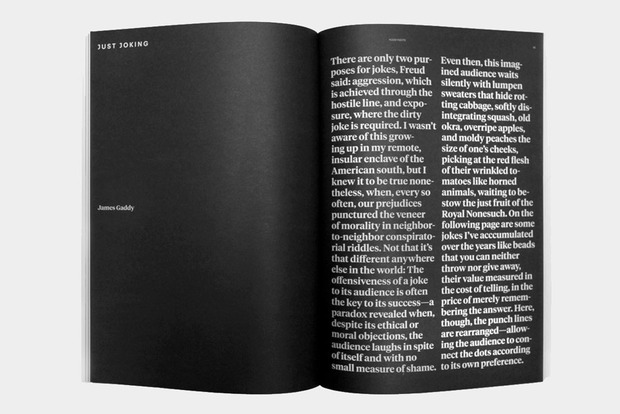
What is the creative process of putting together an issue like?
Ha: The issues are always based on a historically relevant moments in food history and culture. The first issue was dedicated to Gordon Matta-Clark’s restaurant, Food, which operated in the ’70s. The second issue was inspired by TV dinners, and the third issue—which we just launched—is ripping off food fights in a very conceptual and abstract way. Once we decide on a theme for the issue, we approach artists that we think might be relevant to the theme. We work back and forth with them. It’s a really collaborative process. We don’t want the artist to be too literal about the food, so we really push the artists, designers and writers to create conceptual pieces.
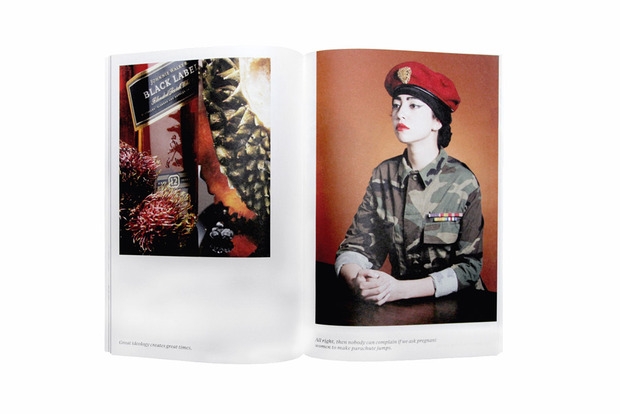
What can you tell me about the third issue?
Ha: I believe that the theme, food fights, is relevant because of what’s going on politically and socially today. We have over 30 contributors featured in the issue, each of which dealt with the theme in a different manner. Tom Sachs contributed a sculpture entitled Vader. We also have an anonymous entry about New York City’s Chinatown gang wars. It is a journal entry with family photos about what the situation was like in Chinatown during the ’70s. The writer’s grandfather started the first Chinese restaurant in Manhattan and was part of the Chinese mafia.
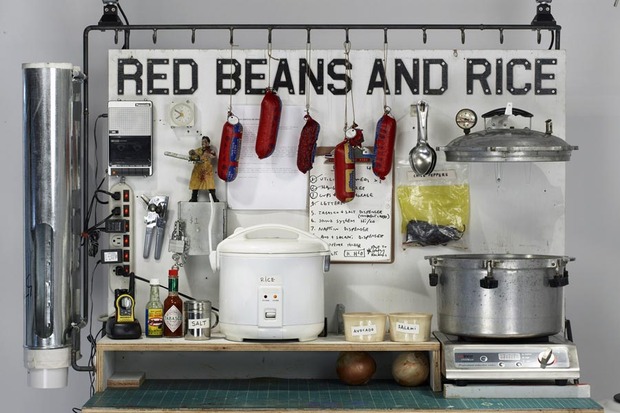
You celebrated the launch with a collaborative dinner?
Ha: Yes, we always try to emphasize the dinner that takes place to celebrate the launch, as it is a way to celebrate the contributors, and also allows the magazine to manifest in a physical manner. We celebrated the release of White Zinfandel Issue No. 3: “Food Fights” at NADA Miami with San Francisco-based chef Leif Hendendal, who premiered a series of amuse-bouches, and multi-media artist Item Idem (Duval) showcased an installation entitled Felon.
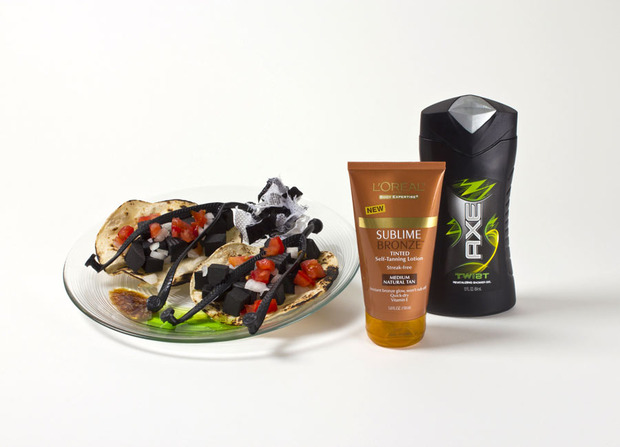
What is the inspiration behind Felon?
Duval: I was inspired by Japanese Dekotora, which translates to decoration trucks. These trucks are usually in blaring neons, and have chrome polish, so they are very visual. I also blended that with dazzle art, which is a camouflage pattern from the 1910s. One of the panelists called it The Hotdog Cart From Hell. The car is used as a platform to create interactions between people when activated through performance. It is part of Wall to Wall: The Fusion Collective.
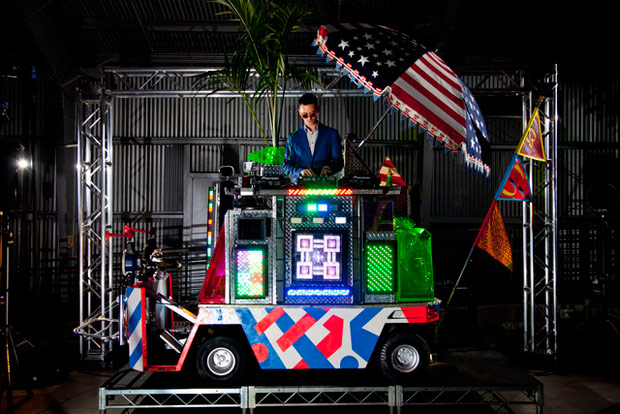
What’s Next for White Zinfandel?
Ha: We are starting to commission artists to work with everyday objects and re-appropriate them to create functioning art. We also just redesigned our website, as are trying to keep pushing online content and incorporate moving images between the issues. Finally, we are talking to Palais de Tokyo about collaborating on the launch of the fourth issue. That issue that will come out in Spring/Summer 2013. Stay tuned.
The limited-edition magazine will be available through the White Zinfandel website. Images courtesy of White Zinfandel and Cyril Duval

